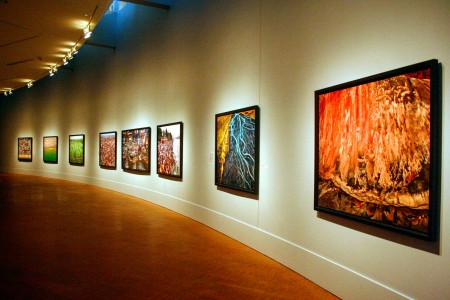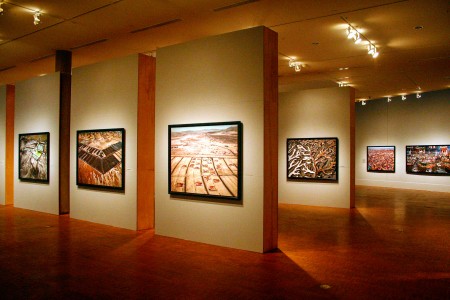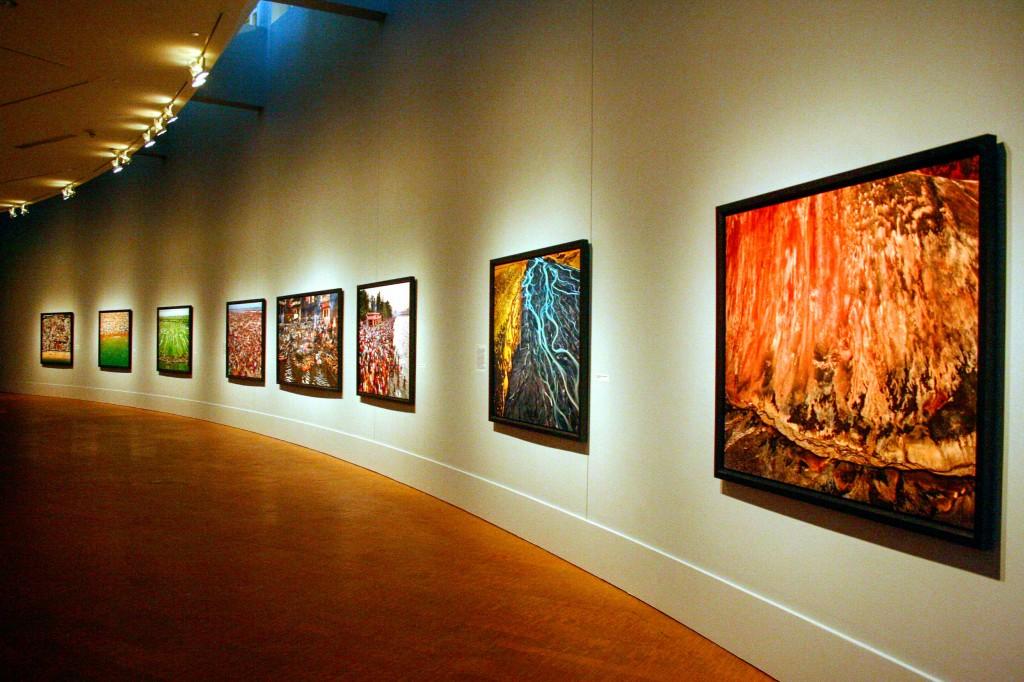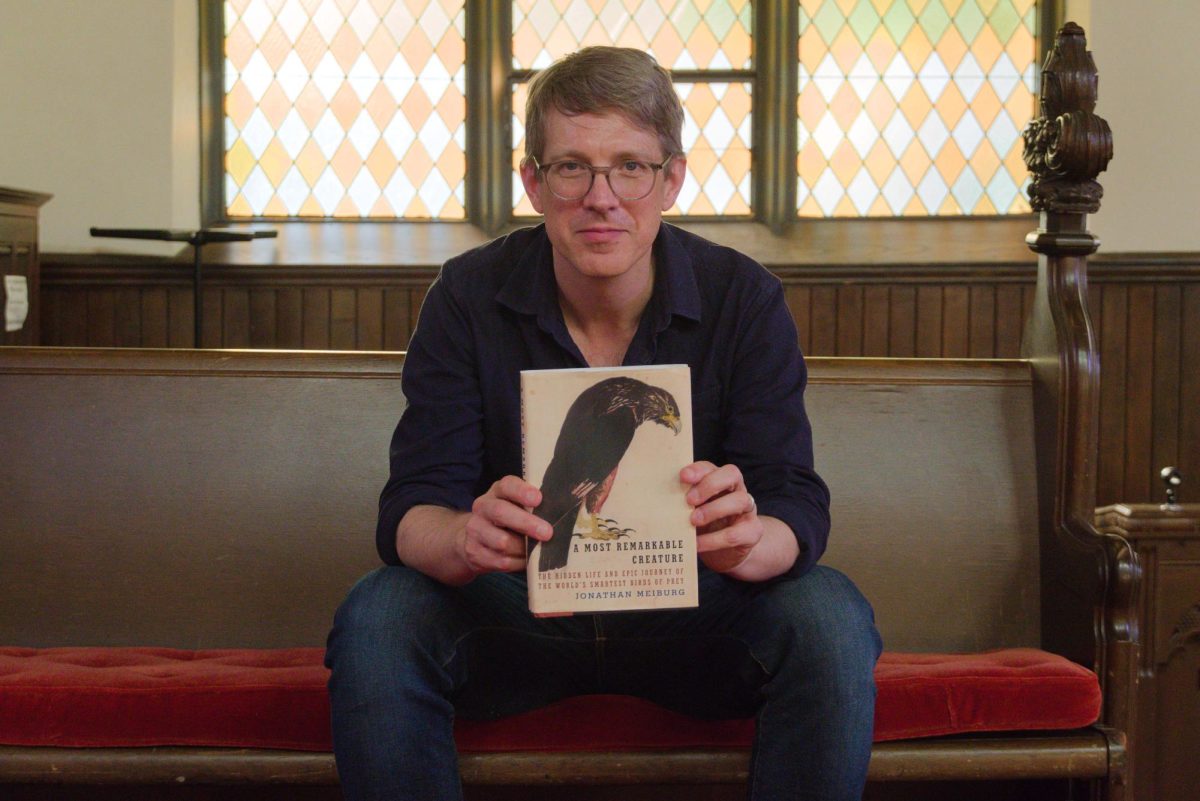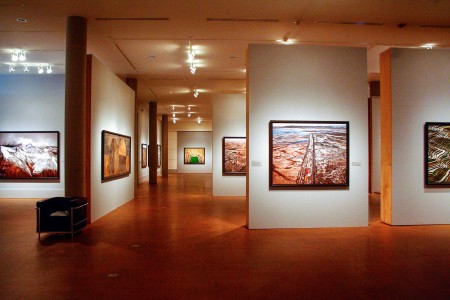
The Faulconer Gallery is currently home to Edward Burtynsky’s “Water,” a collection of 51 enormous photographs of water in its various forms.
The show is composed of five sections: Distress, Control, Agriculture, Aquaculture, Waterfront and Source. Most of the photographs are aerial, and were taken from all over the world over the span of five years.
The photographs are often mistaken for paintings because of their unusual size, said Daniel Strong, the Faulconer Gallery’s Curator of Exhibitions and Associate Director.
Although there are no photographs of Iowa in the agricultural section, Strong said that he believes the exhibit’s global ethos, environmentalism and diversity of perspective will resonate with students, faculty and the Grinnell community at large.
“Art is everybody’s first language. Every child that has ever been born draws pictures before they write their name,” Strong said. “Art is something that can be related to … any discipline, there is a creative side, there’s an exploratory side, and art is perfect for that, especially this exhibition.”
In fact, classes all across campus are spending time at Faulconer, including a few first-year tutorials.
Grinnell currently owns two Burtynsky photographs, and Strong said he would like to expand the collection by purchasing one of the 10-foot wide photographs currently on display.
Professor Elizabeth Queathem, Biology, who co-teaches one of the interdisciplinary Environmental Challenges and Responses courses, said that her students are brought to the gallery to listen to talks and participate in discussions in which students of different majors are grouped together.
“We were very excited to have our first class meet at the gallery itself, so that we could take advantage of this amazing exhibit, which combines elements of art, science, anthropology and geography,” she wrote in an email to the S&B. “Most of the talks that the class will experience this year focus on water or climate, so the exhibit was an almost eerily good fit, as Burtynsky’s work dramatically highlights our human attempts to control nature and wrest it to our own ends.”
Although Burtynsky’s work sometimes deals with controversial ideas since Burtynsky was also the artist behind a similar show, Oil, Strong says he believes that the photographer is not trying to make a political statement through his work. Rather, Burtynsky is merely showing what is there and trying to get people to think about what they are seeing.
Strong also stressed the beauty of the photographs. “He doesn’t want you to see just an irrigated farm field, he really wants you to see a work of art,” he said.
The agricultural photos, among others, appear almost abstract.
“The abstraction makes an intense visual connection with viewers, pulling us in in order to understand what we are seeking. The more we look, the more we see,” wrote Gallery Director Leslie Wright in an email to the S&B.
Last week, Strong stood in front of the photograph “Phosphor Tailings Pond #2” with a class and struggled to decide whether an indistinct animal in the photo was a duck or a bug. He believes that Burtynsky’s manipulation of distance was intentional.
“If people can’t tell exactly what they’re looking at they look longer,” Strong said.
There are other mysteries in Burtynsky’s show. For one, quite a few photos have a lot more landscape than water in them. And the final section, called the Source, is located in the very back of the gallery.
Strong speculates that Burtynsky “almost thinks of that as an ending, as a direction, in which these things may go. In thinking that one of these days if we don’t play our cards right we may end up back where we started, either living off the land or having to go where the water is.”
There will be a film screening of Edward Burtynsky and Jennifer Baichwal’s documentary, Watermark, on Friday, Sept. 12 at 7:30 p.m., in Sebring-Lewis Hall. The film details the making of Burtynsky’s work. The exhibit will be on display in the Faulconer Gallery until Sunday, Sept. 28.
